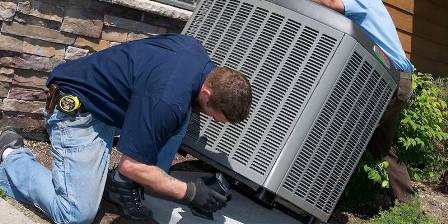
Tips to Choose the Right HVAC System
Home Improvement May 10, 2020, Comments OffEverybody knows one of the main concerns architects, building managers and contractors have when selecting an HVAC system for new buildings. It’s cost, of course.
But to comprehend the real cost of an HVAC system, one must consider not only the original purchase and installation cost of the equipment, but lots of other factors unique to every individual project.
Here’s an instant primer that lots of builders, architects and contractors will dsicover useful when topping off a commercial building with a fresh Heating and Air Conditioning in Ashford system.
UNDERSTAND YOUR BUILDING OCCUPANT’S PRIORITIES
The selection of an HVAC system is guided by many factors, including first cost, operating cost and code ventilation requirements. Other considerations are the technical capability of the staff preserving an HVAC system, and how tightly the temperature and humidity have to be controlled within an area. Choices may be further complicated when making a HVAC system over a retrofit project, as there may be space or weight constraints to cope with. Ultimately, it’s the responsibility of the engineer designing the HVAC system to utilize the building owner and occupants to know what system is most beneficial and satisfies the priorities of every job. For instance, a medical center may desire a more technical HVAC system (leading to higher in advance and/or maintenance costs) to provide tight control over temperature and humidity. Understanding which factors are most significant to the building occupants can help narrow down which HVAC system(s) are viable over a project.
BE PRECISE
It’s important to accurately calculate the load on the HVAC equipment and steer clear of using guidelines as the basis of your design. Cooling and heating requirements will change greatly on each job with respect to the type of center (educational, hospitality, retail, medical, etc.), the jobsite location and exactly how tightly the building occupants require the temperature and humidity manipulated within the area. Oversizing of HVAC equipment can result in short cycling, temperature swings and occupant soreness. If undersized, the HVAC equipment might not exactly manage to satisfying the strain on peak days when ambient temperatures are in their most extreme. In any case, the power of the HVAC equipment to properly dehumidify an area may be affected. It pays to spend the time in advance to accurately calculate the full total capacity of the machine required rather than add supplemental pieces of equipment later.
REVIEW PART Weight EFFICIENCY
The “part insert” efficiency of the gear is vital to bear in mind. To keep building occupants comfortable all year round, an HVAC system is sized to meet the insert when ambient temperatures are at their most extreme. For almost all of the entire year, however, an HVAC system will run at part load. If something or device is chosen that can achieve this task efficiently, it may help reduce working costs. All too often only full weight efficiency is taken into account, which may only enter into play during a tiny percentage of every year operation.
AVOID OPERATIONAL BUDGET BUSTERS
The procedure of HVAC systems is often a sizable portion of a commercial buildings yearly operating budget. Selecting a proper system that meets optimum heating and cooling demands and maintains ventilation requirements is vital. The tedious maintenance necessary to keep a system operating at peak efficiency, however, is often overlooked. Without regular and program maintenance, many bits of HVAC equipment run less efficiently after a while. A high-efficiency system may seem to be great in the look level, but if a building’s maintenance staff can’t keep up with the HVAC equipment on site, any efficiency gains over alternate systems may be lost. On top of that, service calls or contracts from outside distributors may quickly get expensive for the building owner. Choose a HVAC system that maximizes efficiency without exceeding the technical functions of the staff designed to keep up with the equipment.
COMMON AND COSTLY MISTAKES
There are many issues that can arise when choosing an HVAC system. One common mistake is underestimating the cooling insert due to the introduction of outdoor air as ventilation. In the summertime a few months especially, the introduction of outdoor air as ventilation can significantly increase the water content in a building. It’s important to choose equipment that can properly dehumidify the space to avoid high relative dampness levels and the comfort and mold growth conditions that can occur in case a building or area exceeds 60 percent relative humidity. Adding HVAC equipment to take care of high humidness problems later or working with mold remediation can be a costly mistake.
REFINE THE Collection OF OPERATIONS
Once a HVAC system is chosen, there tend to be small refinements that can be made to the sequence of operations to increase its efficiency. For example, CO2 sensors could be added to zones in a building to find occupancy levels and decrease the amount of ventilation air provided by the HVAC equipment during unoccupied cycles. Small refinements to the sequence of operations could lead to big savings.
Selecting an HVAC system that is affordable and meets your cooling and heating needs can seem daunting. It doesn’t need to be. Follow this advice and you’ll get the most bang for your HVAC buck.